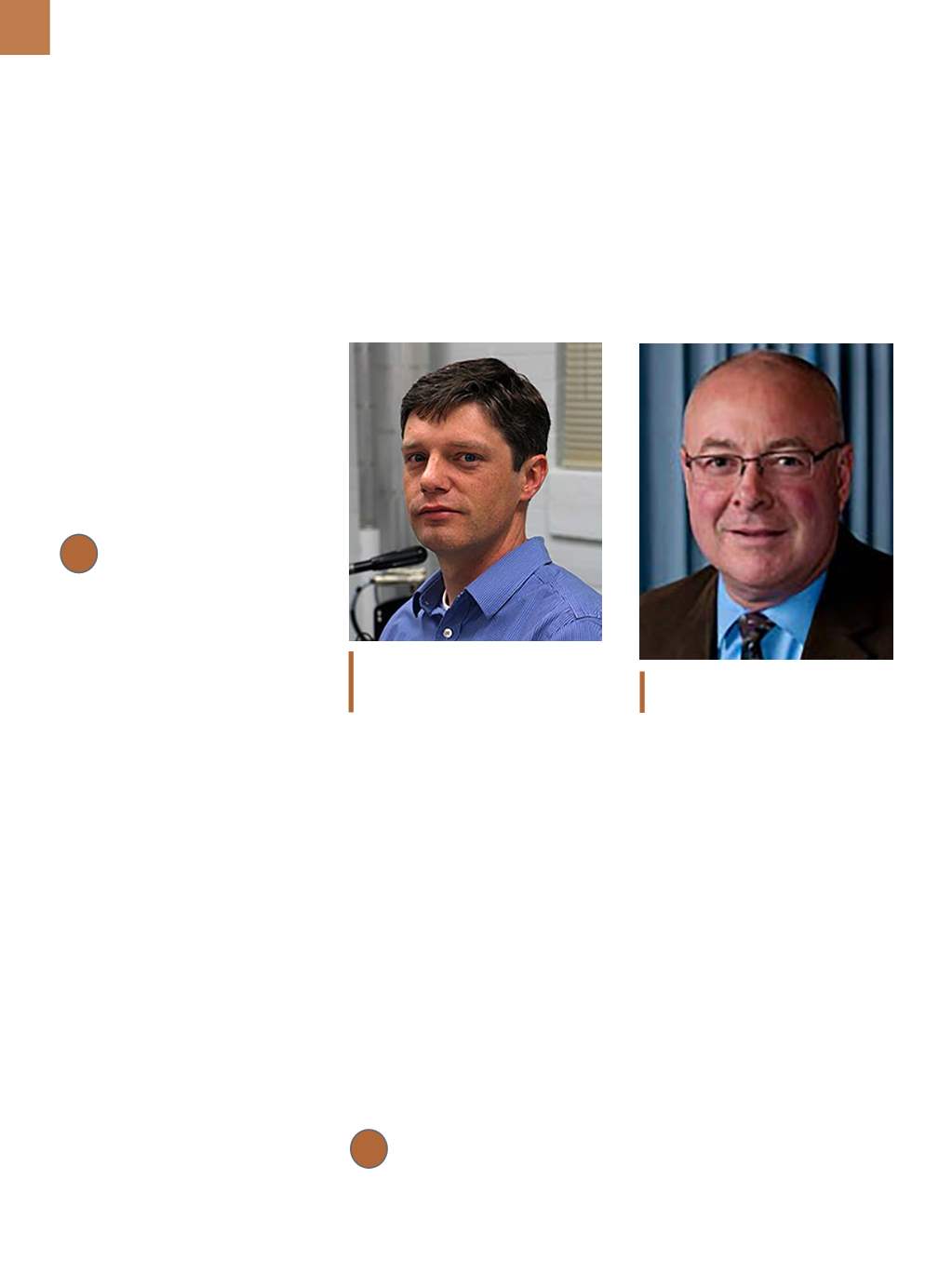

A D V A N C E D M A T E R I A L S & P R O C E S S E S | N O V E M B E R / D E C E M B E R 2 0 1 5
2 2
FIVE WAYS MATERIALS TESTING
IS CHANGING THE WORLD
RESEARCHSPOTLIGHT
Engineering departments at universities across the U.S. are using materials
testing to advance scientific research. Five of the most exciting innovations
under development are presented here.
H
igher education researchers are
developing advanced materials
that will improve building integ-
rity, enhance medical treatment for in-
fants, and drive biomedicine to the next
level. Key to each of these developments
is the testing process. Beloware five ways
that materials testing in being used in to-
day’s academic research environment.
1
MECHANOBIOLOGY AND
REGENERATIVE MEDICINE
While biomechanics has existed
for a number of years, much of the new
and exciting work in the field centers on
moving from classic materials testing
to testing at the cellular level. “Mech-
anobiology has become a hot field,”
says Ed Sander, an assistant professor
at University of Iowa’s department of
biomedical engineering. “You have to
develop new ways to mechanically test
very small things like a cell.”
Sander points to the challenge of
size in this work. “Classical materials
testing systems are designed to test big
things, strong things, and things that
are linear and don’t deform much,” he
says. “I am usually testing really small
samples, like a cornea, or a sheet of
cells, or a small piece of engineered
tissue.” In addition to size issues, tes-
ters must accommodate less than ideal
geometries. “Gripping is a big issue, as
is measuring low force accurately, all
while doing it in a sterile environment
continually over time,” says Sander.
Materials used to make biomed-
ical devices need to satisfy a range of
characteristics, including withstanding
fatigue and being nontoxic. “If you have
a hip replacement, a heart valve, or you
need a graft, the material must be in
spec and meet certain requirements,”
says Sander. “When you get to regener-
ative medicine, you need materials that
act like native tissue in the body.”
Testing is where ideas are proven.
“To diagnose when an aneurism might
rupture, we need to go beyond current
geometry-based standards. We need to
see how an excised piece of tissue con-
forms to loads and fails, and then some-
how connect that mechanical behavior
to the informationwe can get frommed-
ical imaging devices. If we do this, a cli-
nician could more accurately diagnose
whether a risky surgery should be un-
dertaken or not,” says Sander. “All of this
work leads to improving human health.”
2
DEVELOPING NEW
PLASTICS
Plastic compounding represents
most of the research activity at Univer-
sity of Massachusetts Lowell (UMass
Lowell), as new applications have re-
quirements that cannot be met by ex-
isting plastics. “Everything is tested, in-
cluding electrical, optical, and surface
properties,” says Robert Malloy, chair
of the plastics engineering depart-
ment. “But at the heart of each plastic
are mechanical properties.” Students
measure mechanical properties in ten-
sion, compression, shear, and flexure;
dielectric constant and dissipation fac-
tor; thermal behavior under stress; and
melt rheology.
Testing these newly designed
materials for mechanical properties is
critical to plastics research and for de-
veloping reliable design data. “We need
tests to be repeatable,” says Malloy.
“You can follow a standard test and get
good data, but that does not necessari-
ly work for design.”
Edward Sander, assistant professor, Uni-
versity of Iowa department of biomedical
engineering.
Robert Malloy, plastics engineering
department chair, UMass Lowell.


















